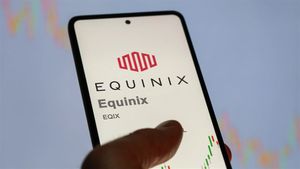
Communications platform-as-a-service company Bandwidth (NASDAQ: BAND) beat Wall Street’s revenue expectations in Q2 CY2025, with sales up 3.7% year on year to $180 million. On the other hand, next quarter’s revenue guidance of $190 million was less impressive, coming in 1.1% below analysts’ estimates. Its non-GAAP profit of $0.38 per share was 14% above analysts’ consensus estimates.
Is now the time to buy BAND? Find out in our full research report (it’s free).
Bandwidth (BAND) Q2 CY2025 Highlights:
- Revenue: $180 million vs analyst estimates of $178.9 million (3.7% year-on-year growth, 0.6% beat)
- Adjusted EPS: $0.38 vs analyst estimates of $0.33 (14% beat)
- Adjusted Operating Income: $16 million vs analyst estimates of $13.87 million (8.9% margin, 15.4% beat)
- The company reconfirmed its revenue guidance for the full year of $752.5 million at the midpoint
- EBITDA guidance for the full year is $88.5 million at the midpoint, in line with analyst expectations
- Operating Margin: -2.1%, up from -3.5% in the same quarter last year
- Market Capitalization: $415 million
StockStory’s Take
Bandwidth’s second quarter saw revenue and non-GAAP profitability exceed Wall Street’s expectations, but the market responded negatively as investors weighed the muted guidance for the upcoming quarter. Management credited AI-driven enterprise voice adoption as a core growth factor, emphasizing expanding use of the Maestro platform for critical communications in regulated sectors. CEO David Morken highlighted that every new enterprise win included Maestro, reflecting increased demand for integrated AI voice solutions. Management also pointed to record customer retention and growing average revenue per customer, particularly among large enterprises migrating to the cloud. Still, the company faced questions on the pace of AI monetization and broader competitive dynamics in messaging.
Looking ahead, Bandwidth’s forecast is shaped by expectations for continued AI integration across customer workflows and a belief that AI voice will become increasingly central to enterprise communications. Management expects Maestro and related AI platform services to underpin higher revenue per customer, but acknowledged that adoption patterns will vary by client and sector. CFO Daryl Raiford stated, “We remain confident in the acceleration of our second half, but are monitoring typical seasonality and customer implementation cycles.” The company plans to deepen its AI software capabilities and leverage channel partnerships to drive further enterprise migration, while remaining attentive to risks tied to macroeconomic conditions and evolving competitive pressures.
Key Insights from Management’s Remarks
Management attributed Q2 performance to expanding AI voice deployments, strong enterprise customer wins, and deeper integration of its Maestro platform, while cautioning that competitive pricing and sector-specific adoption patterns influenced results.
-
AI voice momentum: The Maestro platform was a key driver in every major enterprise win, with management citing use cases in financial services and healthcare where AI-powered customer experience is considered mission-critical. CEO David Morken described Maestro as providing “the programmable intelligence layer that drives higher revenue per customer.”
-
Consumption multiplier from AI: Management explained that each AI-powered call can generate three to four times the revenue of a standard voice call, due to software-driven value-added services like orchestration, transcription, and fraud detection. This is already being realized in customer usage and is expected to further increase as AI adoption grows.
-
Strength in core voice and new verticals: Bandwidth reported robust demand from enterprises migrating communications to the cloud, including notable wins in healthcare and insurance. Direct sales efforts and channel partnerships both contributed to increased deal flow and higher customer retention.
-
Messaging segment strategy: While messaging saw normalized growth, management emphasized a focus on large, profitable enterprise deals rather than high-volume, low-margin accounts. Expansion into advanced messaging formats like RCS and RBM is intended to strengthen differentiation.
-
Competitive pricing and customer retention: CFO Daryl Raiford noted improved pricing dynamics in both voice and messaging, attributing this to higher value services and strong customer loyalty. Management also highlighted opportunities created by competitor pricing changes, which are prompting some large enterprises to reevaluate providers.
Drivers of Future Performance
Bandwidth expects its growth outlook to be driven by broader AI adoption, deeper Maestro integration, and continued enterprise migration to the cloud, while monitoring margin pressures and evolving customer demands.
-
AI platform expansion: The company plans to accelerate development and integration of new Maestro features, aiming to capture more value as customers expand their use of AI-driven communications. Management believes additional software capabilities can further increase average revenue per user and improve retention, especially in regulated verticals.
-
Enterprise cloud migration: Bandwidth is targeting large-scale migrations from on-premises systems to the cloud, with emphasis on reliability and compliance. Management sees ongoing channel partnerships as a key growth lever for onboarding new enterprise customers, particularly in sectors with complex migration needs.
-
Margin management and market risks: While expecting margin expansion through higher-value services, the company remains cautious about external headwinds such as macroeconomic uncertainty, competitive pricing pressures, and the pace of customer AI adoption. Management indicated that full-year profitability targets are contingent on execution in the second half and typical seasonality.
Catalysts in Upcoming Quarters
Looking ahead, our team will be tracking (1) the rollout and customer adoption rates of new Maestro AI features, (2) progress in winning large enterprise cloud migration deals through both direct and channel sales, and (3) the impact of industry-wide pricing changes on messaging and voice revenue mix. We’ll also watch for updates on integration with AI partners and competitive responses in key verticals.
Bandwidth currently trades at $14.04, down from $16.24 just before the earnings. Is the company at an inflection point that warrants a buy or sell? Find out in our full research report (it’s free).
High Quality Stocks for All Market Conditions
When Trump unveiled his aggressive tariff plan in April 2025, markets tanked as investors feared a full-blown trade war. But those who panicked and sold missed the subsequent rebound that’s already erased most losses.
Don’t let fear keep you from great opportunities and take a look at Top 6 Stocks for this week. This is a curated list of our High Quality stocks that have generated a market-beating return of 183% over the last five years (as of March 31st 2025).
Stocks that made our list in 2020 include now familiar names such as Nvidia (+1,545% between March 2020 and March 2025) as well as under-the-radar businesses like the once-micro-cap company Kadant (+351% five-year return). Find your next big winner with StockStory today.
StockStory is growing and hiring equity analyst and marketing roles. Are you a 0 to 1 builder passionate about the markets and AI? See the open roles here.






